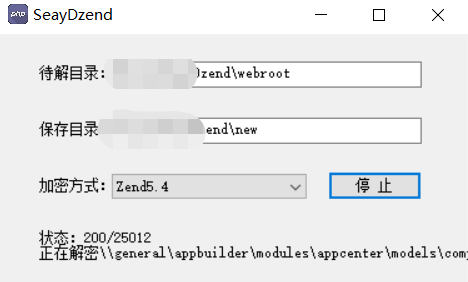I tend to use a StatusStrip at the bottom of most of my applications for simple status updates and occasionally a progress bar.
However, it appears ToolStripStatusLabels do not inherit from control, so they have no .Invoke, or .InvokeRequired. So how would I thread-safe make a call to change it's text property?
Coded answers for posterity and others that come searching:
Action<string> test=(text) =>
{
if (this._statusStrip.InvokeRequired) this._statusStrip.Invoke(
new MethodInvoker(() => this._lblStatus.Text = text));
else this._lblStatus.Text = text;
};
or
private void TestInvoker(string text)
{
if (this._statusStrip.InvokeRequired)
this._statusStrip.Invoke(
new MethodInvoker(() => this._lblStatus.Text = text));
else this._lblStatus.Text = text;
}
This is a good question!
While ToolStripStatusLabel does not inherit from control, the containing ToolStrip does! Use the containing ToolStrip's Invoke to make calls against the ToolStripStatusLabel.
This is because the ToolStrip manually handles the drawing of its component bits, much the same way that WPF manages the drawing of all of its component bits, without generating a separate handle for each one. This is useful because it's easy to forget that every Control has an associated HANDLE and the system only has a finite number of those to dish out, e.g..
(I've run into this before also. I mentioned it in a sidebar on another question, for example. I should update that text to reflect my more recent understanding.)
Also, in general, you do not Have to use the InvokeRequired and BeginInvoke on the exact same control that you are manipulating in code, as long as you can guarantee that the control you are manipulating was created on the same thread (e.g., in the forms' initialization routine), as the UI element you are calling InvokeRequired /BeginInvoke on.
You can do this by using the delegate key word and the Control.Invoke() method. This example shows how you manage a thread safe .Text and .ForeColor ajustment.
private delegate void SetToolStripDelegate(string text, Color color);
private void SetToolStrip(string text, Color color)
{
statusBar.Text = text;
statusBar.ForeColor = color;
}
Inside the thread context you can make a thread-safe call of this method like this:
{ // thread begin...
// somewhere inside the thread
Invoke(new SetToolStripDelegate(SetToolStrip), "Connected.", Color.Green);
} // thread end...
In simple words, while passing the StatusStrip Items, pass the StatusStrip too along in parameter and use as StatusStrip.BeginInvoke or Invoke method and place the Status strip items inside it.
Below code should help you how to call and update the StatusStrip not only from other Task/Thread, but also from other Class.
//Coded by Chandraprakash [2017-07-18]
//frozenprakash.com
using System;
using System.Threading;
using System.Threading.Tasks;
using System.Windows.Forms;
namespace UIUpdateFromOtherClass
{
public partial class Form1 : Form
{
public Form1()
{
InitializeComponent();
}
private void button1_Click(object sender, EventArgs e)
{
FN_Execute();
}
async void FN_Execute()
{
Second s = new Second();
await Task.Run(() => s.Execute(lbl1,
pb1,
ss1,
ss1Lbl1,
ss1Pb1)
);
MessageBox.Show("End");
}
}
public class Second
{
public void Execute(Label lbl1,
ProgressBar pb1,
StatusStrip ss1,
ToolStripLabel tsLbl1,
ToolStripProgressBar tsPb1)
{
lbl1.BeginInvoke(new Action(() =>
lbl1.Text = "Second"
));
pb1.BeginInvoke(new Action(() =>
{
pb1.Style = ProgressBarStyle.Marquee;
pb1.MarqueeAnimationSpeed = 10;
}));
ss1.BeginInvoke(new Action(() =>
{
tsLbl1.Text = "Second";
tsPb1.Style = ProgressBarStyle.Marquee;
tsPb1.MarqueeAnimationSpeed = 10;
}));
Thread.Sleep(3000);
}
}
}
Windows Forms Screenshot


